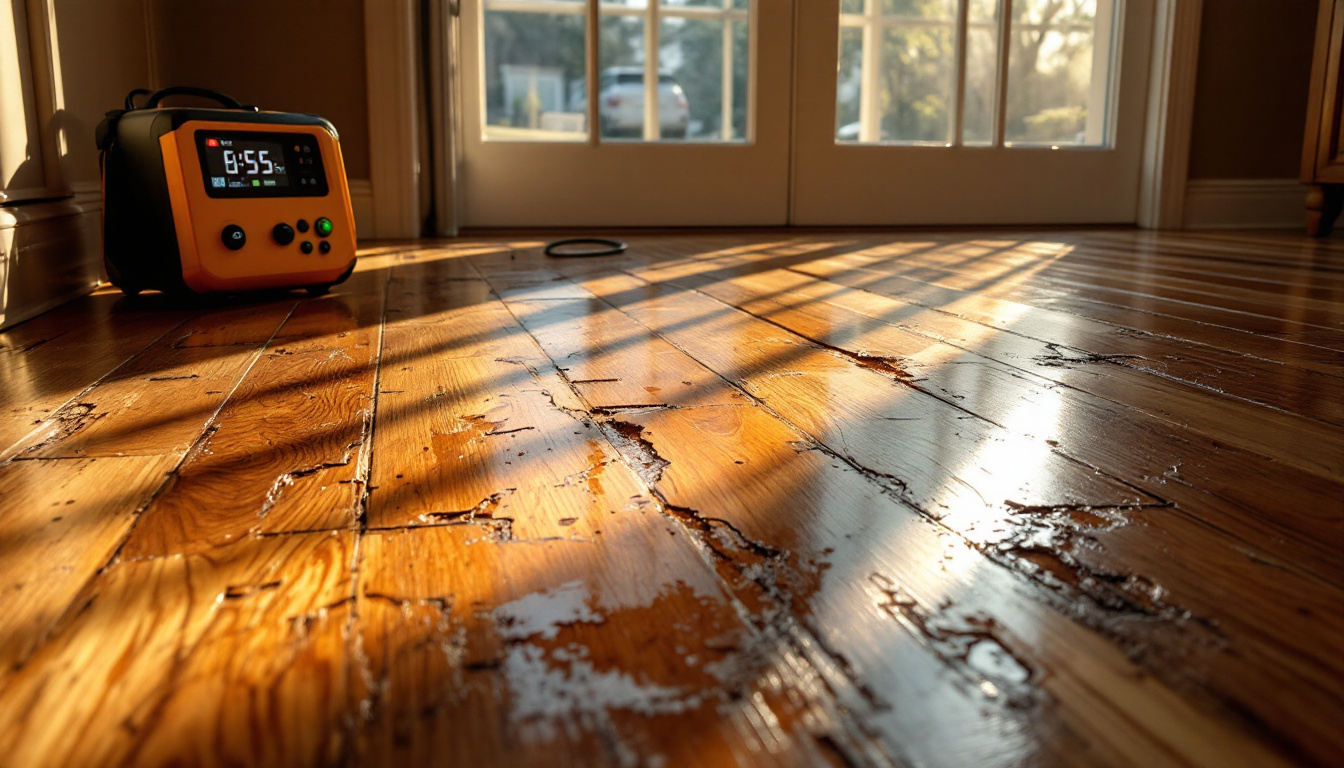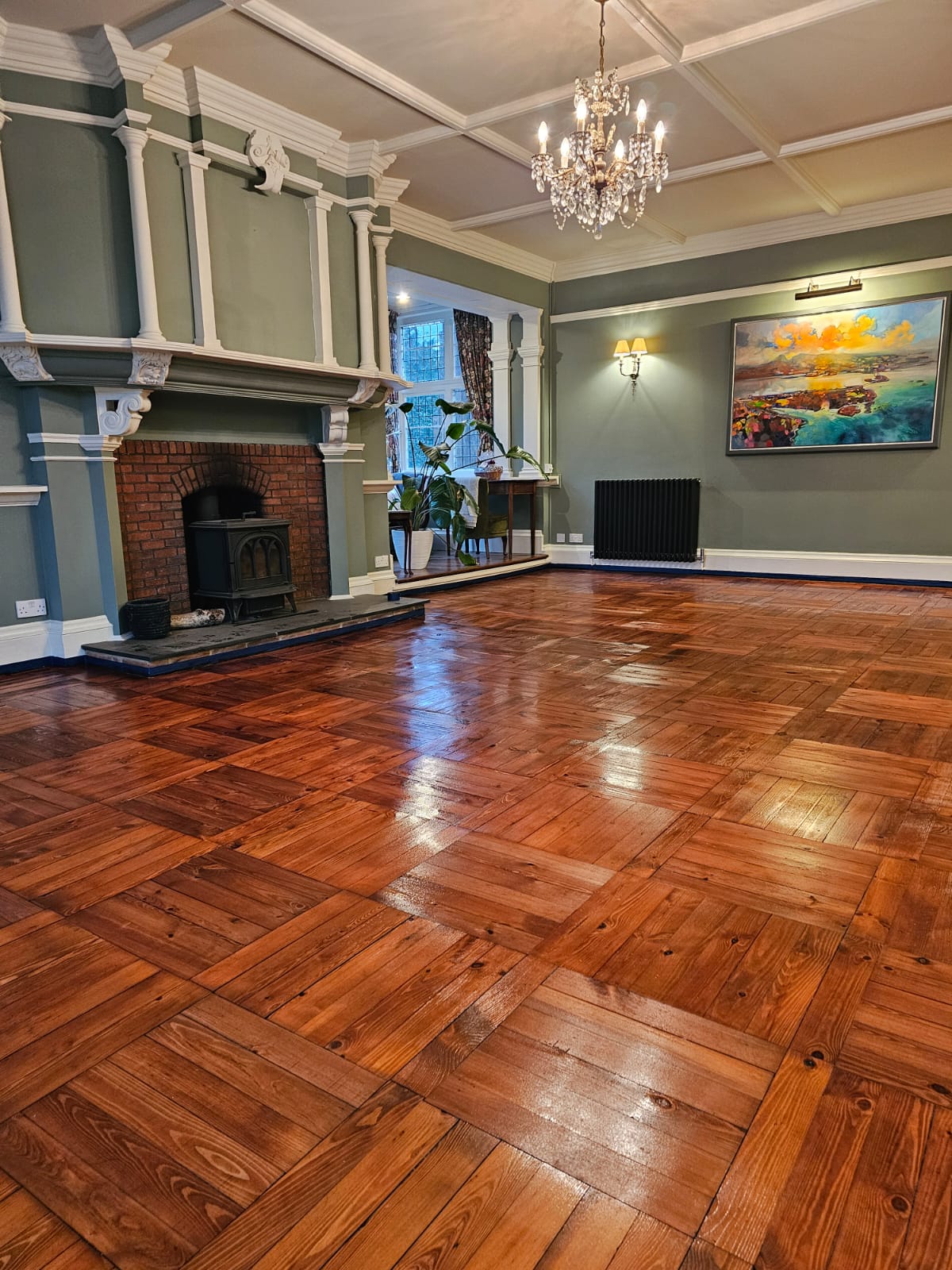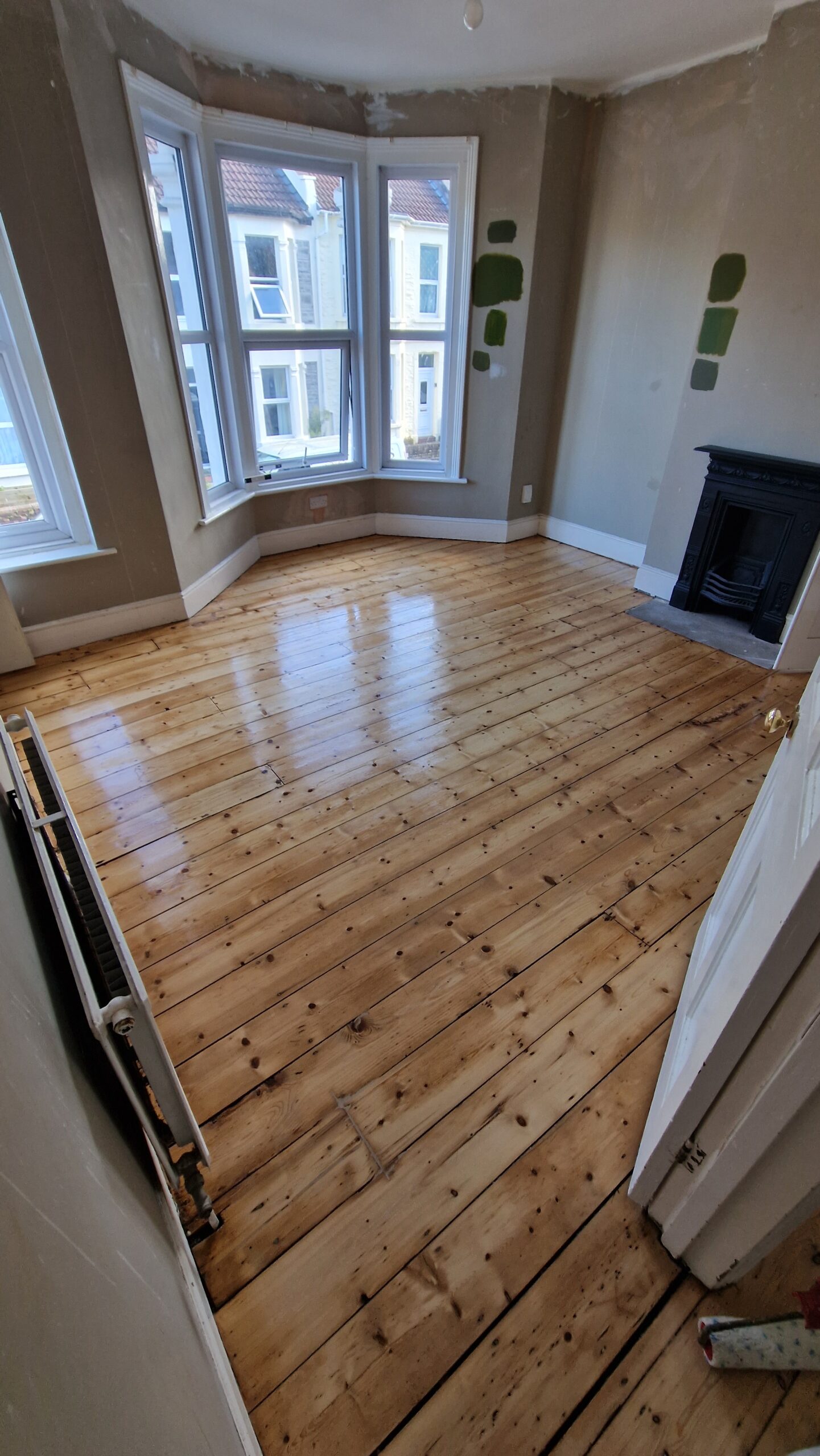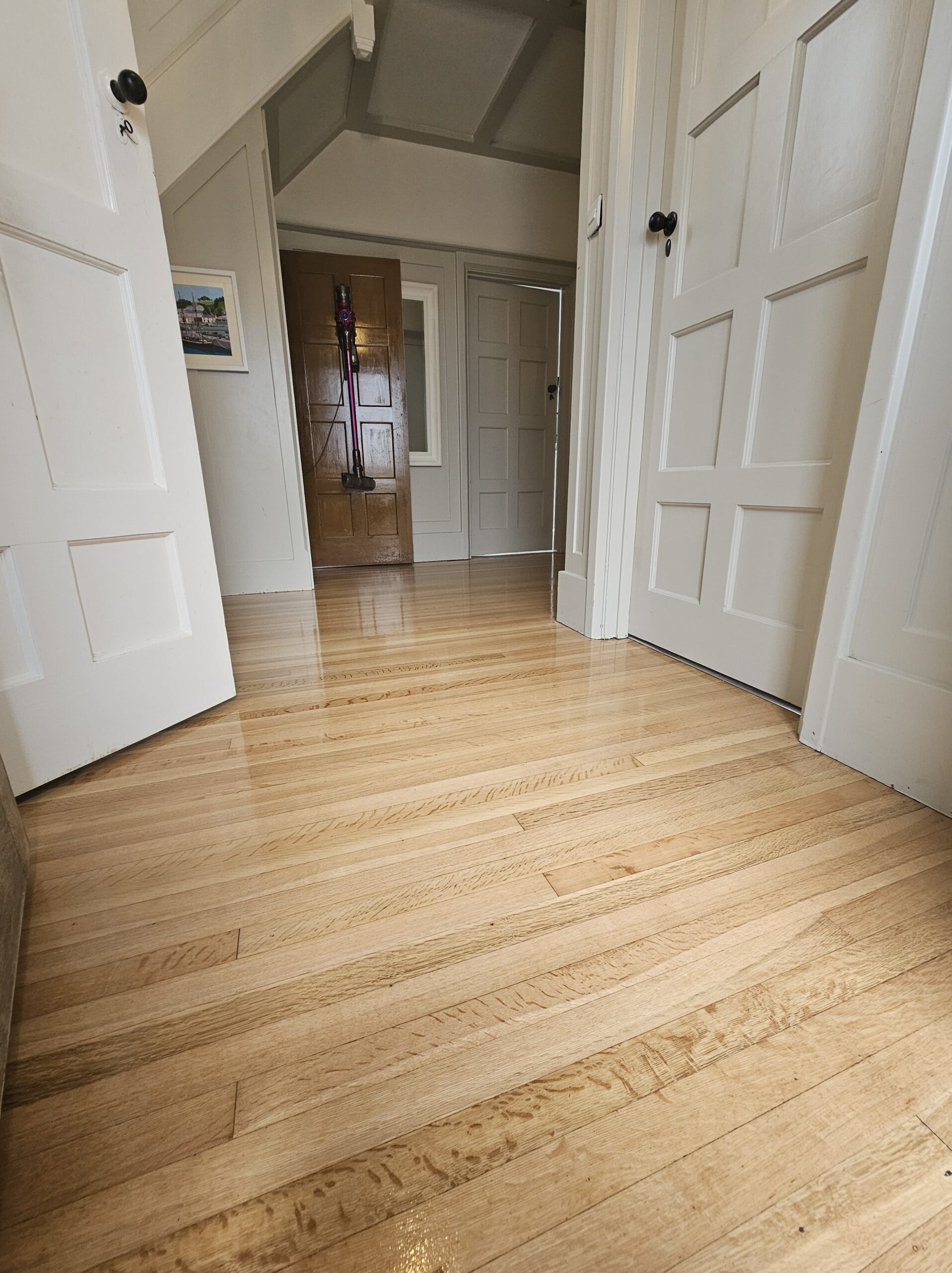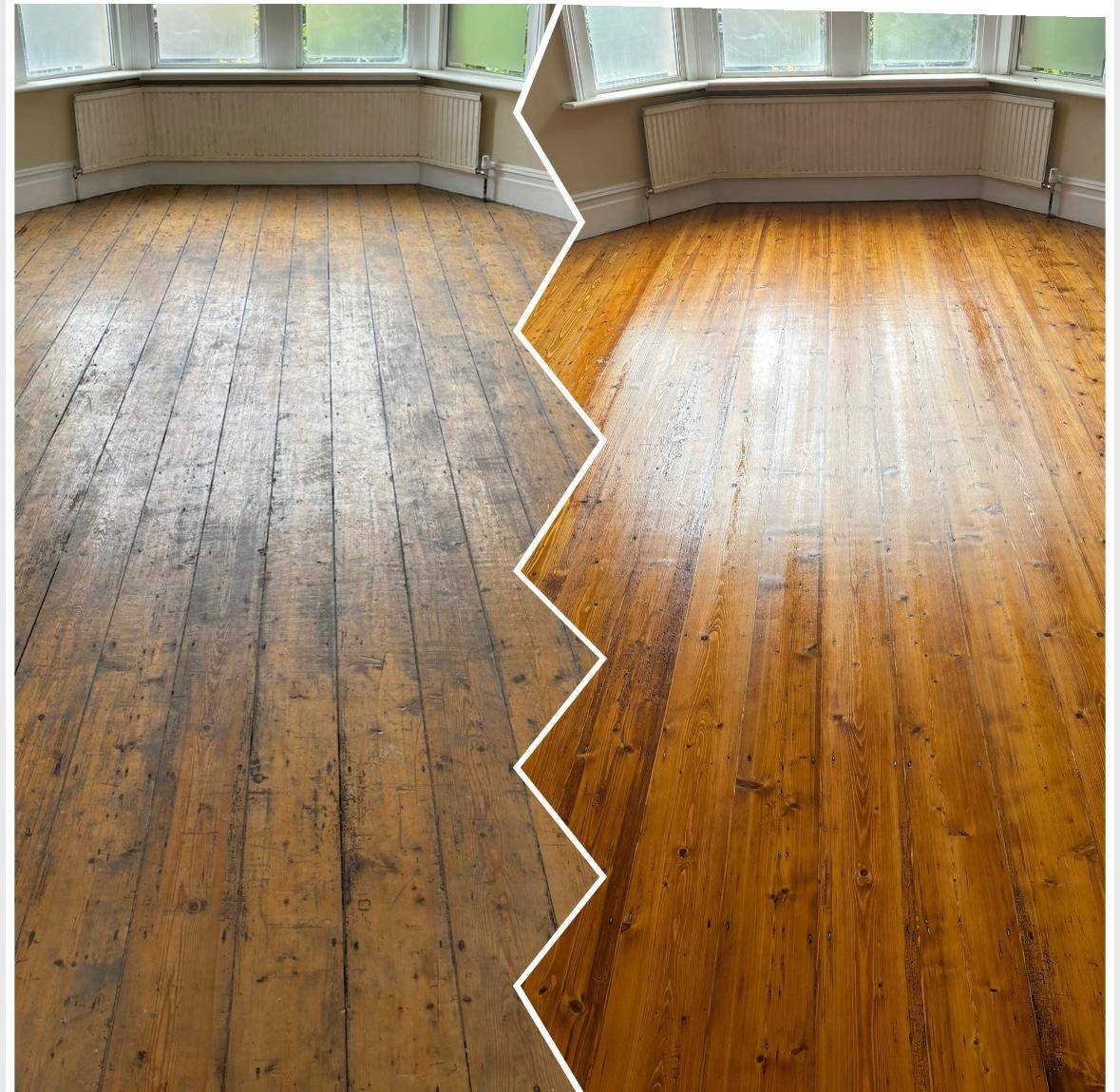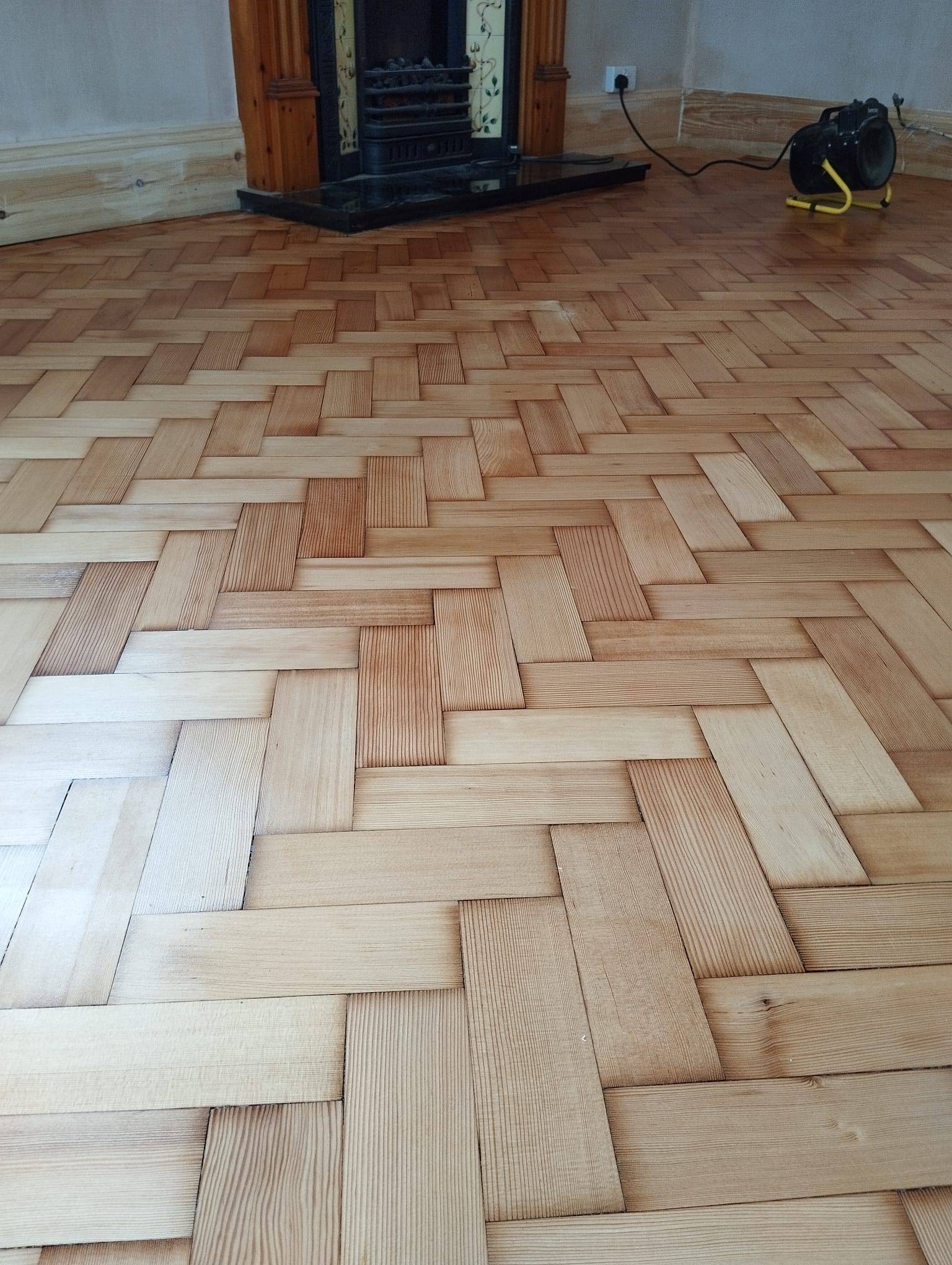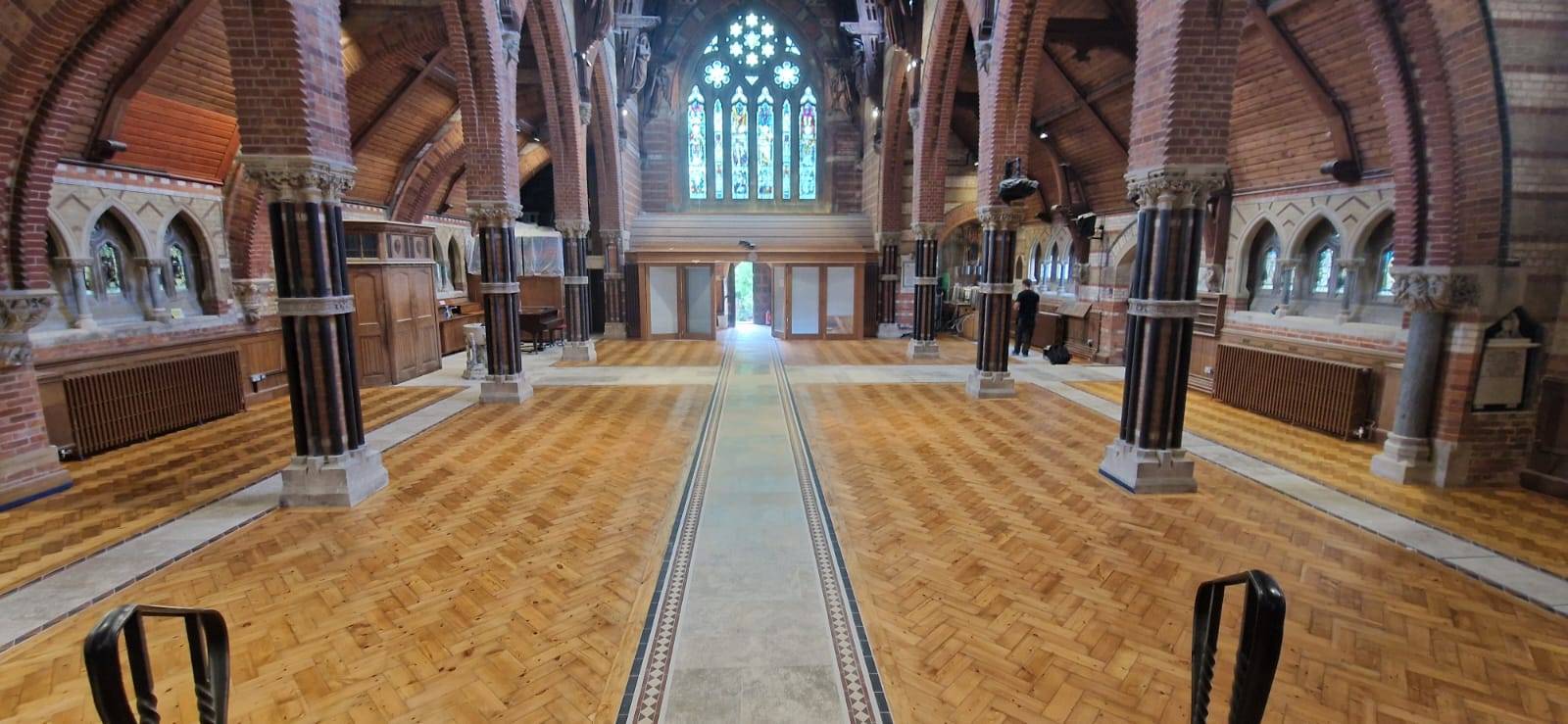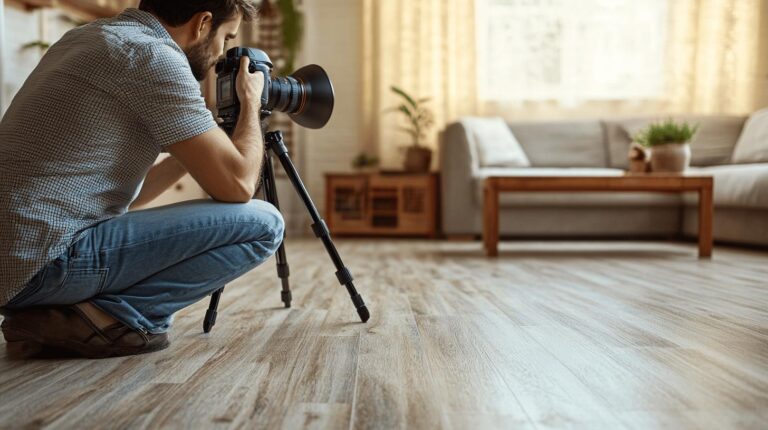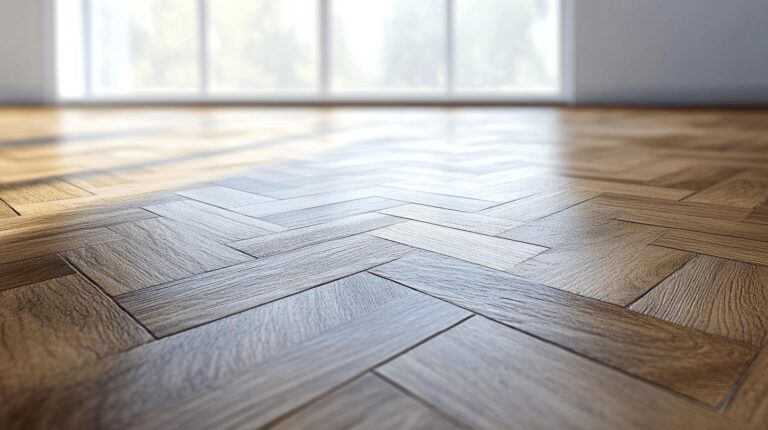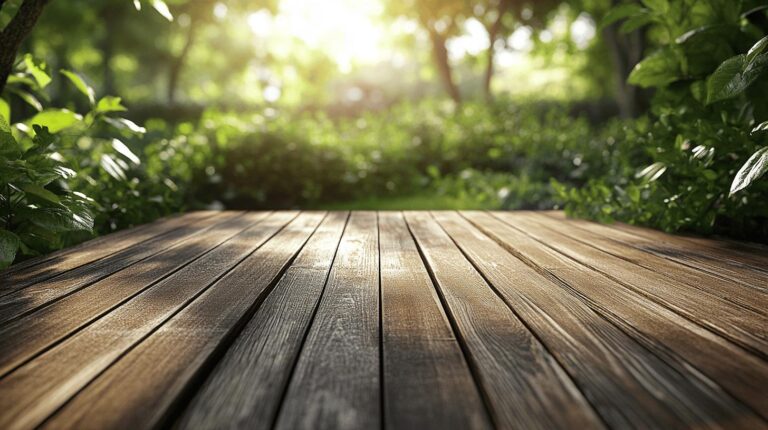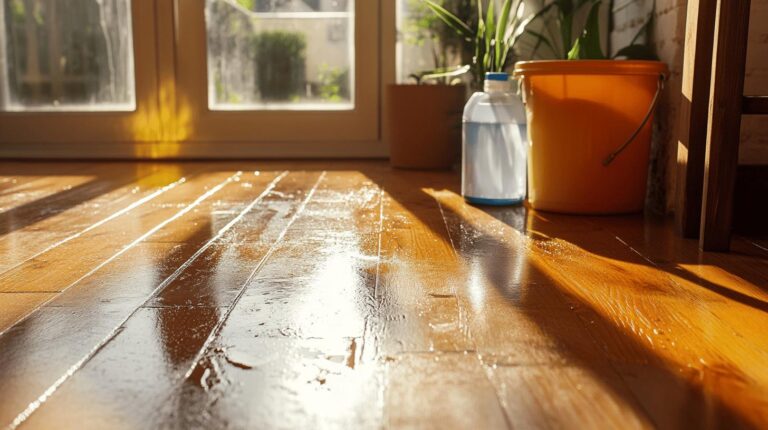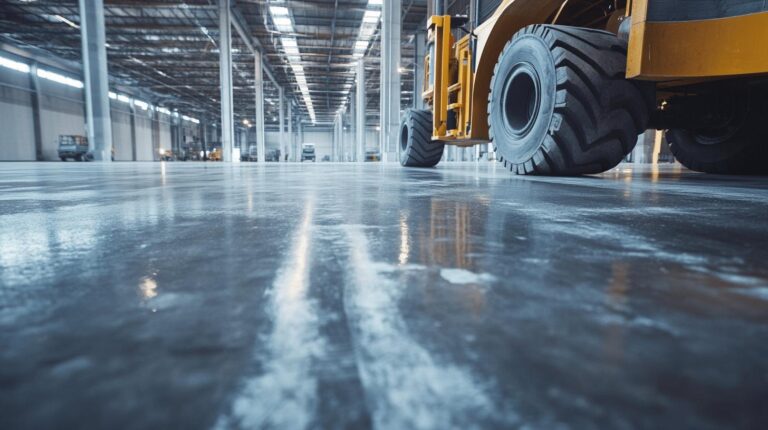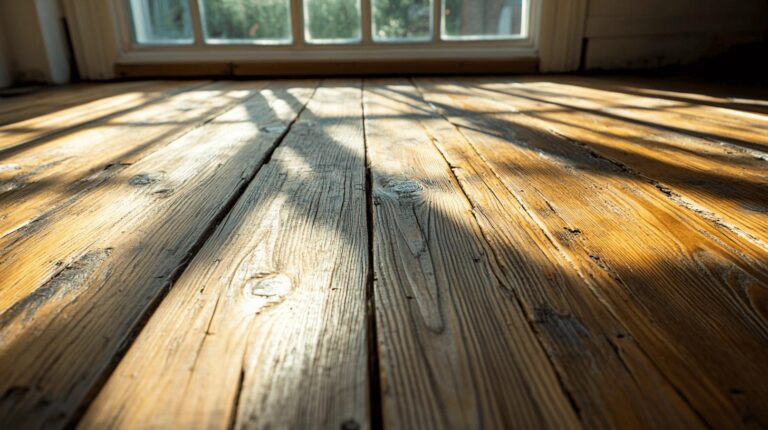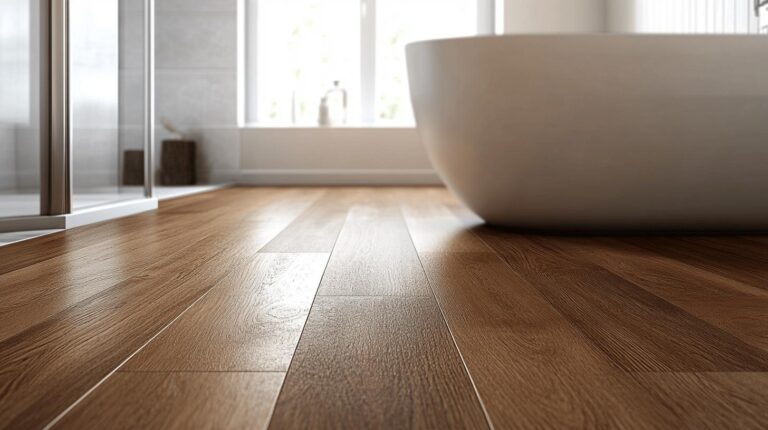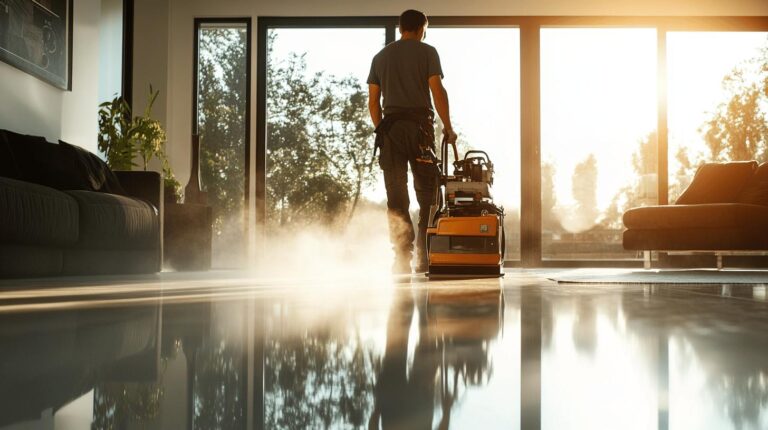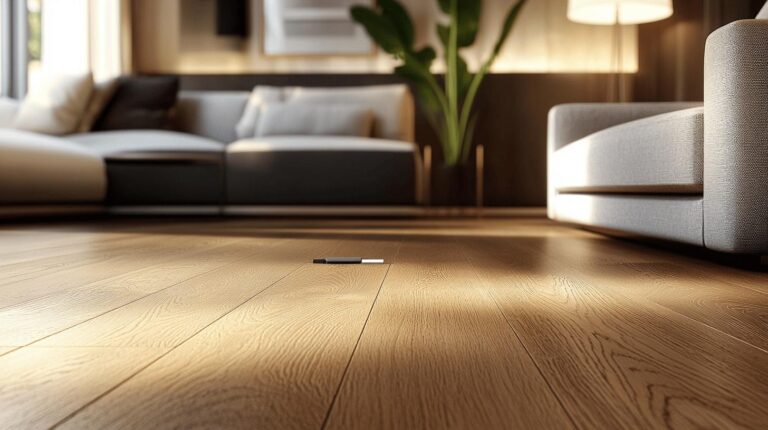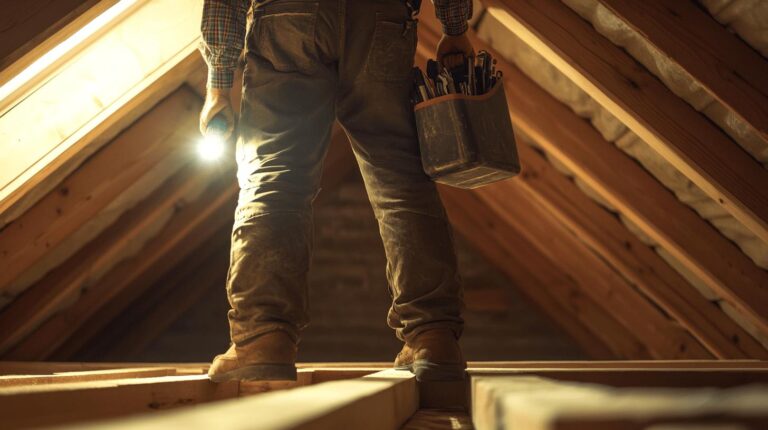Imagine waking up one morning to discover your beautiful wood floor submerged in water—every homeowner’s nightmare. While water might seem harmless, its impact on wood floors is profound and can lead to significant and costly damage if not addressed swiftly. This article delves into swift solutions for water-damaged wood floors, providing detailed guidance on emergency actions, effective drying techniques, and recognising early warning signs. By understanding these critical steps, you can minimise damage and avoid a costly restoration project. Read on to equip yourself with the knowledge needed for efficient emergency wood floor recovery.
Recognising Signs of Water Damage in Wood Floors
Identifying the early signs of water damage in wood floors is essential for preventing costly repairs and extensive damage. When these signs are detected promptly, homeowners can take immediate action to mitigate further deterioration and avoid transitioning from minor repairs to major restoration projects. Understanding and recognising these signs can save time, money, and the structural integrity of your flooring.
- Discolouration: Changes in colour can indicate moisture absorption, usually appearing as dark spots or patches.
- Warping: Uneven surfaces or lifted boards suggest the wood has expanded due to moisture.
- Buckling: This occurs when the floorboards lift from the subfloor, creating gaps or ridges.
- Mould Growth: Visible mould or a musty odour often points to prolonged moisture exposure.
- Cupping: Edges of the boards rise higher than the centre, forming a concave shape.
If these signs are ignored, they can escalate into more severe issues. Discolouration may deepen, indicating prolonged water exposure that could compromise the wood’s structural integrity. Warping and buckling can worsen, leading to tripping hazards and unsightly floors. Mold growth, if unchecked, poses health risks and can spread to other areas. Cupping might progress to crowning, where the centre of the boards is higher than the edges, complicating repairs. Early intervention is crucial to prevent minor signs from evolving into significant restoration challenges.
Emergency Actions for Water-Damaged Wood Floors
Acting swiftly in the face of water damage to wood floors is crucial to prevent further deterioration and costly repairs. Water can cause significant harm to wooden surfaces, and if left unchecked, it can lead to permanent damage and potential health risks due to mold growth. Therefore, immediate action is essential to mitigate the impact of water exposure.
- Remove Excess Water: Use a wet/dry vacuum or towels to extract as much water as possible from the affected area.
- Increase Air Circulation: Set up fans around the room to enhance airflow and speed up the drying process.
- Deploy Dehumidifiers: Place dehumidifiers in the space to reduce moisture levels in the air, preventing further absorption by the wood.
- Monitor Moisture Levels: Regularly check the moisture content of the wood using a moisture meter to assess progress and ensure thorough drying.
Each of these steps plays a vital role in the emergency recovery process. Removing excess water immediately helps minimise the risk of water seeping deeper into the wood and subfloor. Increasing air circulation and deploying dehumidifiers are critical in reducing humidity, which is essential to avoid mould formation that can start within 48 to 72 hours if moisture levels exceed 16%. Monitoring moisture levels ensures that the drying techniques are effective and allows for timely adjustments. Delaying these actions could lead to severe structural damage, necessitating more extensive restoration efforts.
Effective Drying Techniques for Wood Floors
Effective drying techniques are crucial for minimising damage and restoring wood floors after water exposure. The drying process should begin immediately to prevent the moisture content from reaching damaging levels, which can rise as high as 40% after flooding, compared to the normal 6% to 12%. Different types of wood may respond uniquely to moisture, necessitating tailored drying approaches. The initial step involves removing standing water with a wet/dry vacuum or absorbent towels, ensuring the surface is free from excess moisture. Enhancing air circulation using fans and dehumidifiers is critical to expedite evaporation and minimise humidity levels in the affected area.
Tools and Equipment for Drying
Several tools and equipment are essential for effective drying of wood floors. A wet/dry vacuum is indispensable for quickly extracting standing water from the floor’s surface. Towels can be used to absorb residual moisture that the vacuum might miss. Fans are vital for boosting air circulation and accelerating the drying process by promoting faster evaporation. Dehumidifiers play a crucial role in reducing air moisture levels, preventing further absorption by the wood. Together, these tools form a comprehensive drying system that tackles water damage efficiently and effectively.
Monitoring moisture levels is a vital step in the drying process to ensure that the wood returns to its normal moisture content range. A moisture meter can provide accurate readings of the wood’s current moisture level, allowing for precise adjustments to drying methods as necessary. Regular monitoring helps track progress and ensures that drying techniques are working effectively. Failure to achieve adequate drying can lead to long-term damage, such as warping or mould growth, underlining the importance of continuous assessment and intervention.
When to Seek Professional Restoration Services
DIY approaches to water-damaged wood floors can only go so far. While minor issues like small stains or mildly warped boards might be manageable with household tools and techniques, extensive damage often surpasses the capabilities of non-professionals. Severe warping, persistent dampness, or visible mould growth are indicators that professional restoration services are necessary to ensure a thorough and effective recovery.
- Extensive Damage: When the damage covers large areas or affects multiple rooms.
- Severe Warping: Boards that are significantly lifted or distorted.
- Mold Growth: Visible mold or a persistent musty smell despite cleaning efforts.
Consulting professional restoration services, like Ryan’s Restoration, offer several advantages. Certified experts bring specialised knowledge and advanced equipment that can address even the most severe cases, ensuring that the floor and subfloor are treated effectively. They can accurately assess the extent of the damage, provide a comprehensive plan for restoration, and implement corrective measures to prevent future issues. Hiring professionals not only guarantees a higher chance of returning your wood floors to their original state but also ensures safety by addressing potential health risks associated with mould.
Prevention Tips to Protect Wood Floors from Future Water Damage
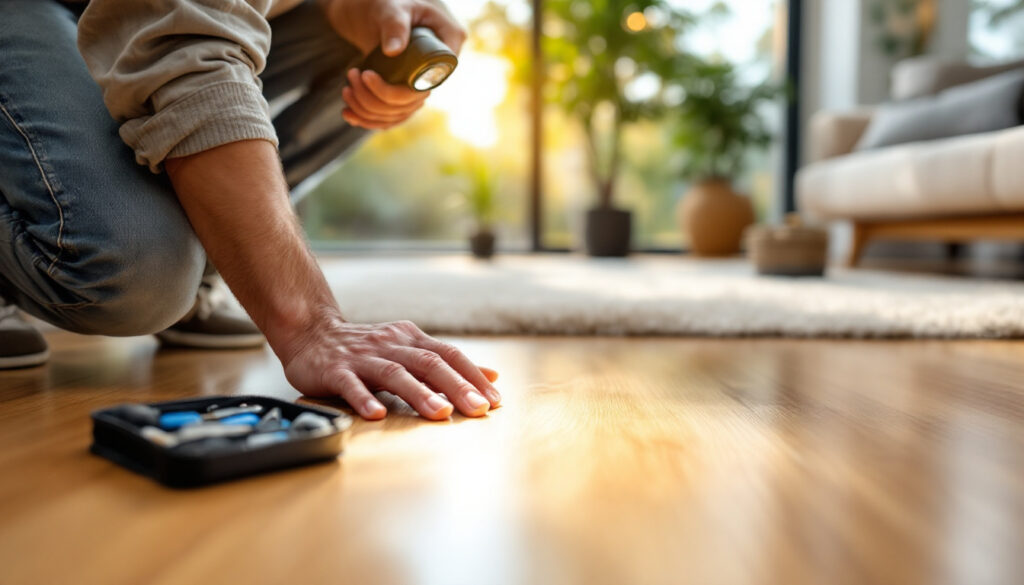
Understanding the common causes of water damage is vital for implementing effective prevention strategies. Water damage to wood floors can arise from several sources, including burst pipes, leaking roofs, plumbing leaks, and open windows during rainstorms. Each of these scenarios can lead to significant damage if not addressed promptly. By identifying these potential risks, homeowners can take proactive measures to protect their wood flooring from moisture-related issues.
- Install moisture barriers under the flooring to prevent water penetration.
- Seal gaps and cracks in flooring with waterproofing sealant.
- Regularly inspect and maintain plumbing and roof systems to catch leaks early.
- Use window seals or coverings to protect against rain intrusion during storms.
Regular maintenance and inspections are critical components of water damage prevention. Conducting routine checks allows homeowners to detect early signs of leaks or moisture accumulation before they escalate into more severe problems. By maintaining a vigilant approach, any necessary repairs or adjustments can be made swiftly, ensuring the long-term integrity and beauty of wood floors. Implementing these preemptive measures not only safeguards against potential damage but also extends the lifespan of the flooring.
Final Words
Acting swiftly can significantly reduce the impact of water on wood floors. Recognising early water damage signs, employing effective drying techniques and executing emergency recovery steps are crucial in minimising damage. Immediate actions and the right equipment are key to effective wood floor restoration.
For severe cases, consulting professional restoration services like Ryan’s Restoration ensures proper recovery and long-term protection. By implementing prevention tips and maintaining regular inspections, future water damage can be minimised. Emergency wood floor recovery after water damage demands attention to detail and prompt care. Committing to these strategies ensures wood floors remain both beautiful and durable over time.
Save your water-damaged floors – Contact Ryan’s Restoration for immediate expert assistance!
FAQ
What are the signs of water damage on hardwood floors?
Signs of water damage on hardwood floors include discolouration, warping, buckling, and mould growth. Prompt action is crucial to prevent minor issues from developing into larger, costly restoration projects.
How quickly can water damage wood floors?
Water damage to wood floors can occur rapidly. If moisture levels exceed 16%, mould can develop within 48 to 72 hours, making immediate action essential.
How can I fix water-damaged, swollen wood floors?
To fix water-damaged, swollen wood floors, dry the affected areas using fans and dehumidifiers. Addressing the issue swiftly can mitigate the need for professional repair and prevent further damage.
What should be done if water gets under the floorboards?
If water gets under the floorboards, use a wet/dry vacuum, fans, and dehumidifiers to dry the area. Removing excess water promptly will prevent further damage and potential mould growth.
How much does it cost to repair a water-damaged hardwood floor?
Repair costs for water-damaged hardwood floors vary based on the extent of damage. Professional assessment can provide accurate cost estimates, considering repair or replacement needs.
Can wood recover from water damage?
Wood can recover from minor water damage with prompt drying and corrective measures. In severe cases, consulting a professional is advised for an effective restoration strategy.
What products can be applied to wood after water damage?
After water damage, products such as wood sealants and finishes can be applied to restore strength and protection. Ensuring the wood is thoroughly dry before application is critical.
